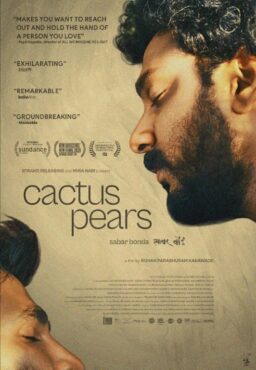It feels like the general consensus around this year’s South by Southwest Film Festival has been that the non-fiction portion of the program was stronger than usual. I’ve certainly been luckier on that side of the ledger, adoring the music docs “This Much I Know to Be True” and “The Return of Tanya Tucker,” and my final report from the virtual fest this year includes three more docs worth seeking out when they come available in your area. In fact, I can’t wait to see how people fall in love with the best of them.
That would be David Siev’s intimate and moving “Bad Axe,” a look at an average family trying to keep their business and mental well-being from collapsing in 2020 as a pandemic, controversial restrictions, and even Black Lives Matter come to their small Michigan town. At the beginning of the Covid-19 crisis in March 2020, Siev, an Asian-American filmmaker, left his home in New York City to return to Bad Axe, MI and document his family as they struggled with fear over lost life, lost business, and lost community. The result is a deeply personal film that feels essential when we tell the story of how 2020 shaped this country, revealing both strengths and weaknesses in small towns across the United States. The title of Siev’s movie makes it sound like a love letter to the city in which he was raised, but it’s much more of a love letter to his family, and so many others like it out there.
Siev’s father Chun fled the Cambodian Killing Fields when he was very young, but he holds the trauma of that experience in ways that sometimes come out in his quick temper and heated conflicts with his daughter Jacyln. She balances so many different things, including her own career and marriage, but she moves from Ann Arbor back to Bad Axe when it’s clear that she’s going to be needed at their family restaurant Rachel’s. When the pandemic starts, the kids are scared for Chun to go be that exposed in the actual restaurant, so Jaclyn takes control. And then 2020 gets crazier when she decides to post support of BLM on their social page and go to a BLM rally in a part of the country that went heavily for Trump.
We have a habit of thinking that the United States is divided into Blue States and Red States, but “Bad Axe” is a reminder that people of different backgrounds and beliefs not only live side by side by work together and support local businesses like Rachel’s. Siev’s love for his family is unbelievably contagious. I found myself so deeply invested in the story that I had to look up the restaurant on Yelp to make sure it was still there. And while Siev undeniably had access to his family in a way that others wouldn’t, these aren’t merely home movies. He has a deft editor’s eye, assembling the footage in a way that flows from major events to minor ones in the Siev’s life, opening not just his door but his heart.

There’s a similar daring intimacy to Rosa Ruth Boesten’s “Master of Light,” one of the most acclaimed documentaries of this year’s fest and a winner for the Grand Jury Prize in its category. I can see why it won. It’s a delicate character study, an unforced examination of an artist coming to terms with his deeply fractured family tree. Boesten takes a more poetic approach than other verité filmmakers might have, but her greatest asset is the vulnerability of her subject, who lets her into his life in a way that illuminates the importance of maintaining that creative spirit even as the world is falling down around you.
“Master of Light” tells the story of George Anthony Morton, a classic painter who was behind bars for ten years for dealing drugs. He perfected his craft behind bars, and continues to paint now that he’s released, returning to his hometown of Kansas City. Most of the drama in George’s life now centers on his mother, who has done time herself. Despite having a solid foundation in Atlanta with a partner and child, he is drawn to his past, trying to reconcile questions from it, like an artist looking for some final brushstrokes.
“Master of Light” could have gone wrong in so many ways, but Boesten maintains a light, almost poetic touch, never feeling like she’s forcing an emotional narrative movie or turning this very personal story into a message. Morton is incredibly forthcoming, even allowing us into his therapy sessions, and we spend time with his art, like when he movingly paints a portrait of his mother. He has learned all of the classical techniques to make this painting a beautiful one, but there’s a personal touch to it that no one else could capture. Boesten’s film allows for long passages of silence, but we can always sense an internal monologue within this artist, and it feels like a gift to see him express it.

A very different kind of documentary closes out my SXSW coverage this year, but it too is a film that benefits from a relationship between its filmmaker and its subject, although the former never could have known what he was in for when he started shooting “Under the Influence.” When Casey Neistat started making his profile of YouTube superstar David Dobrik, he probably thought he was documenting the ascension of a household name. He ended up with a study of the danger of power and a subject who still doesn’t seem to fully comprehend his culpability. There are times when it feels Neistat doesn’t push hard enough on Dobrik in this department, but his connection just allows this problematic creator to put his own foot in his mouth. Like so many things in Dobrik’s life, the camera is just there to record it.
David Dobrik was only 19 when he posted his first video on YouTube. A blend of “Jackass”-inspired lunacy and bro humor mentality would turn his Vlog Squad into a legit phenomenon. By the middle of 2020, he had over eight billion views and was quite simply one of the most famous social influencers in the world. But problems are inevitable when unchaperoned young men are encouraged to keep topping their last video for the clicks and subscribers. A rape allegation dropped in 2020 and then stories emerged about a stunt gone so wrong that it nearly killed a member of the crew. Dobrik is remarkably blasé about so much of this at first, thinking that removing the rape video is enough, and then half-heartedly apologizing on his least-watched YouTube channel. After all, if the video isn’t online anymore, did it really happen?
Dobrik is constantly selling the idea that his personality is built around “fun” but Neistat structures his unraveling to make it clear that the uncontrolled Wild West that is the internet needs to be taken a little seriously too. He’s careful not to point the finger at the YouTube community, and there’s a stronger version of this film that places the Dobrik tale in a bit of a larger context, but he gets a lot out of just letting his subject spin his excuses. Because the truth is that even these personalities who portray “fun” and “openness” online are crafting a narrative with what they choose to highlight and, maybe even more so, what they choose to ignore.












